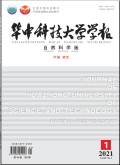华中科技大学学报(自然科学版)2024,Vol.52Issue(2):62-68,7.DOI:10.13245/j.hust.240208
基于小波自编码器的图像盲去噪算法
Blind image denoising method based on wavelet autoencoder
摘要
Abstract
In order to solve the problem that the depth learning based image denoising method has limited denoising ability and poor denoising effect in the blind image denoising task,a wavelet autoencoder(Wavelet-AE)was constructed and it was applied to blind image denoising.Firstly,Haar wavelet was used to construct wavelet convolution layer(DWT)and inverse wavelet convolution layer(IDWT).Secondly,DWT and IDWT were used to build down sampling block and up sampling block respectively.Finally,a wavelet autoencoder was constructed using down-sampling blocks and up-sampling blocks.Wavelet-AE can establish the mapping relationship between noisy images and clean images in the feature space,thus it has better ability for blind image denoising.To quantitatively evaluate the blind image denoising ability of the proposed method,the peak signal to noise ratio and structural similarity were used as evaluation indicators.The experimental results of image blind denoising on Kodak and SIDD datasets show that Wavelet-AE has better blind denoising ability than some advanced traditional methods and depth network denoising methods.The average peak signal to noise ratio(PSNR)can be increased by 4.58 dB at most,and the average structure similarity index measure(SSIM)can be increased by 0.149 at most.关键词
图像处理/图像盲去噪/小波自编码器/综合噪声/真实噪声Key words
image processing/blind image denoising/wavelet autoencoder/comprehensive noise/real noise分类
计算机与自动化引用本文复制引用
马自萍,谭力刀..基于小波自编码器的图像盲去噪算法[J].华中科技大学学报(自然科学版),2024,52(2):62-68,7.基金项目
国家自然科学基金资助项目(61462002) (61462002)
宁夏自然科学基金资助项目(2022AAC03268,2020AAC03215). (2022AAC03268,2020AAC03215)

